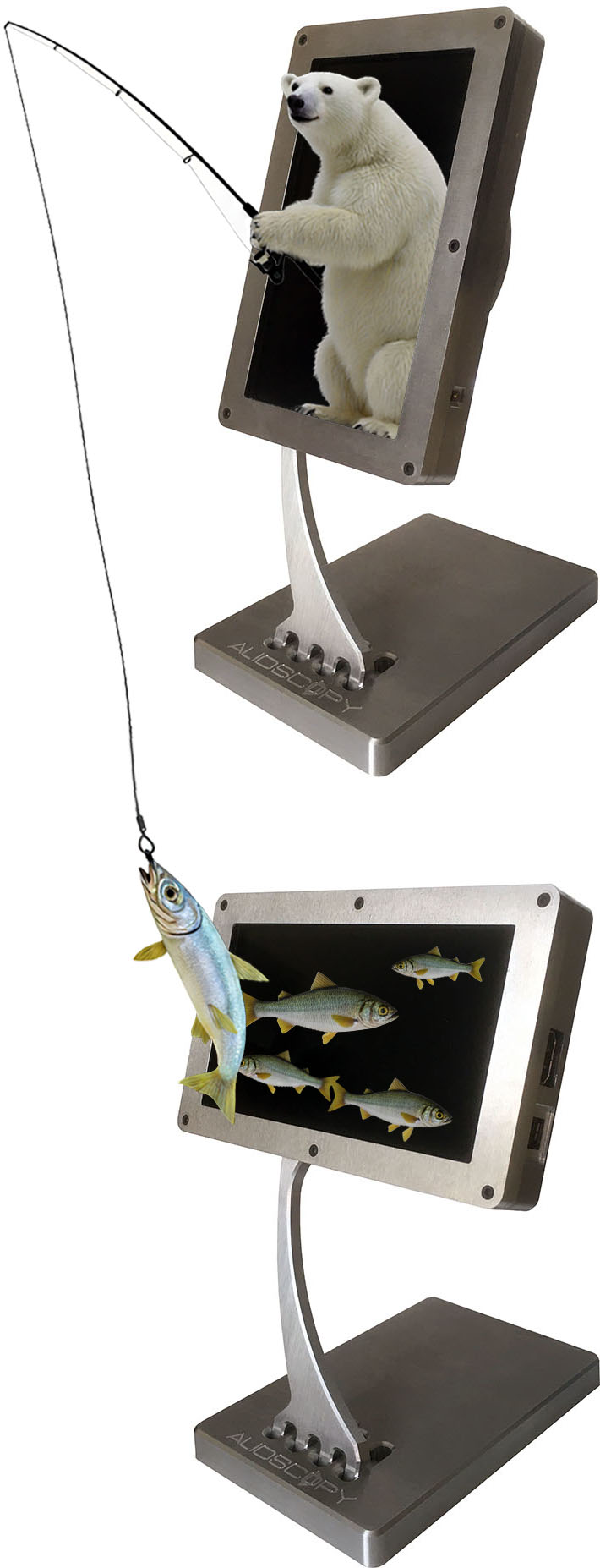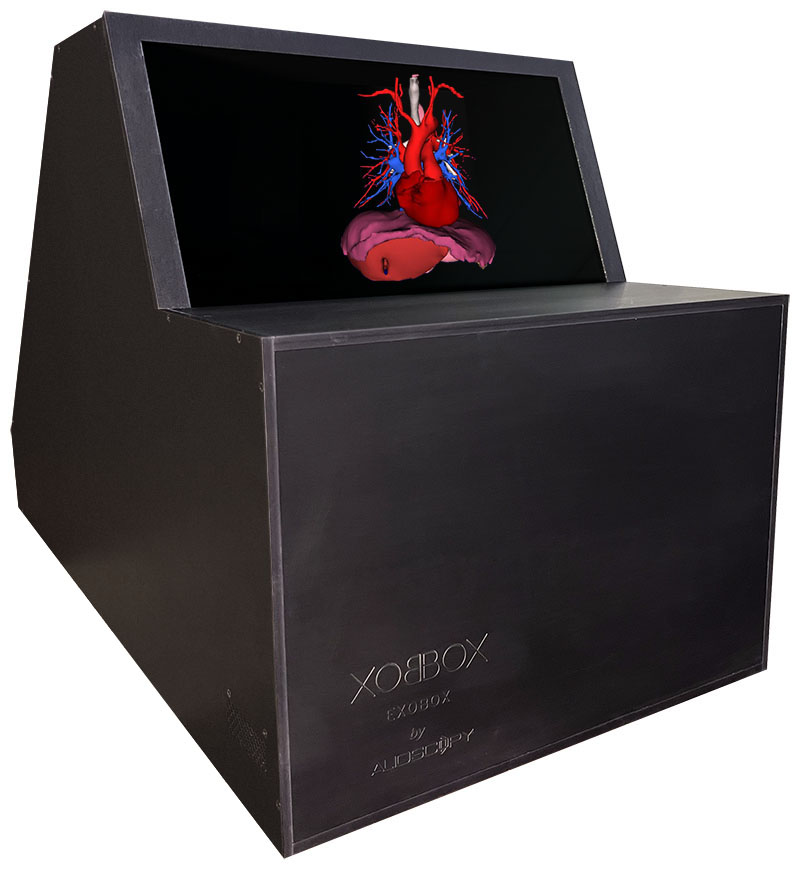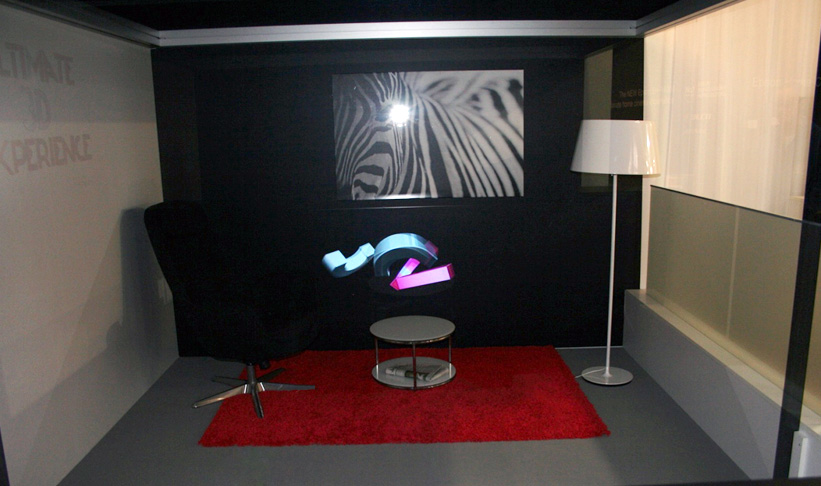3D Solutions for every need
Beyond Eyewear
With the decline of glasses-based 3D televisions and monitors, augmented reality (AR) and virtual reality (VR) headsets have emerged as the primary platforms for immersive experiences. Simulated realities presented on these devices may seem realistic in terms of content, but the experience itself is a disruption of reality. Wearables are invasive in many ways, they create cognitive biases, and the related discomfort is a barrier to adoption.
Alioscopy glasses-free 3D monitors
Alioscopy glasses-free 3D monitors, on the other hand, deliver an immersive experience instantly, without the need for special eyewear. They liberate viewers from cumbersome glasses or headsets, which can isolate users and prevent natural eye contact. Viewing 3D scenes on Alioscopy monitors feels like looking through a window: the sensation of depth is both natural and immediate. It captivates viewers and retains their attention. True 3D also enhances the comprehension of complex visual data, enabling more informed decision-making.
Our latest flagship models boast 8K resolution. Two models, intended for multiple viewers, delivers photographic quality and redefine glasses-free 3D excellence:The Portal is an outstanding single-viewer edition of the Alioscopy 3D8K 65”. It delivers the most compelling immersive experience to date, featuring unlimited depth perception at a 1:1 scale.
Alioscopy 3D displays are available in a broad range of sizes, resolutions, orientations, viewing distances and brightness levels. Our portfolio includes screens from 4.3”, 5.5”, 8.9”, 10.1”, 12.3”, 12.5”, 13.3”, 15.6”, 21.5”, 24", 26.5”, 27", 31.5”, 40”, 42”, 47”, 55”, 65”, to 84”. Portrait, landscape, and square formats are available. Some hand-held-size monitors can even deliver 3D in Dual Orientation, in portrait and in landscape. Most of our glasses-free 3D monitors are designed for multiple viewers, but many also come with integrated eye-tracking to optimize the experience for single-viewer applications. Where there is a will, there is a way!
Glasses-free 3D is not a “one size fits all” solution: your use case, content, and application are crucial. Tell us about your project, and we will suggest the most suitable solution for you!

Alioscopy 5.5” Dual Orientation
Alioscopy Exobox

Alioscopy Digital Exobox
The Digital Exobox was initially engineered for preoperative surgical planning, by leveraging its ability to project the volumetric reconstruction of an organ as a look-alike hologram.
Its ability to hover a three-dimensional image mid-air in front of the device makes it the ultimate solution for showcasing exclusive pieces in a lifelike digital form. It can present the digital twin of a jewel or watch in a uniquely compelling fashion and offers a spectacular alternative to physical objects.
The Digital Exobox can be used to display single pieces in different locations or in conjonction with a configurator. It lends itself perfectly to augmented reality illusions and can be used effectively in showcase windows, once the actual jewels have been stored away for the night. It is available in different sizes.
A Physical Exobox is also available. Instead of a bespoke Alioscopy monitor, it secures a material object in the base, which can be seen floating magically outside. If a Physical Exobox is positioned against a showcase window, the object concealed inside can be seen levitating outside.
The Automotive Exobox is compliant with automotive standards. It was introduced to the market by Marelli as a means to levitate a three-dimensional holographic-like personal assistant above the dashboard or behind the driver’s steering wheel. Thanks to voice recognition, artificial intelligence and speech synthesis, it is possible to interact with the character in real time.
Alioscopy Automotive Exobox
Pepper's ghost

Original Pepper's ghost

Alioscopy Pepper's ghost at IFA Berlin
Pepper's ghost is a theatrical illusion named after John Henry Pepper, who first demonstrated this technique almost 150 years ago. It relies on a slanted semi-transparent mirror (typically at a 45° angle), which allows the main stage to show through, while simultaneously reflecting a secondary scene hidden from the audience. By using appropriate lighting and careful stage setup, elements from the hidden scene can appear, disappear, or even fully replace the main scene.
This illusion is still used today during stage events. It typically requires a standard 2D screen or projector. While the floating image creates a convincing illusion of volume, what is actually seen remains a spaced-out, flat 2D image.
Under similar conditions however, an Alioscopy 3D display will reflect a three-dimensional image, producing a truly volumetric reflection that floats in the scene, offering the audience a staggering holographic illusion.
